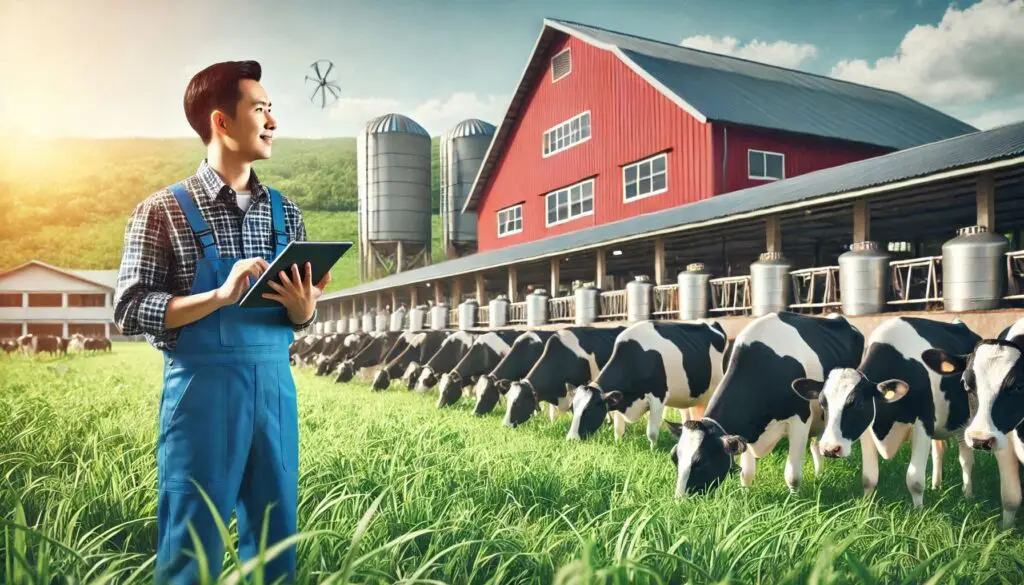The Essential Role of Vitamin E in Livestock Health

What is Vitamin E?
Vitamin E is a fat-soluble vitamin that acts as a powerful antioxidant. It helps protect cells from oxidative damage caused by free radicals. The most biologically active form of Vitamin E is alpha-tocopherol. Livestock require this nutrient to maintain various bodily functions, including muscle control and immune response.
Sources of Vitamin E
Farm animals can obtain Vitamin E from several sources:
- Green Fodders: Fresh green forage is one of the richest sources of Vitamin E. Grazing animals can meet their nutritional needs by consuming lush pastures.
- Vegetable Oils and Fats: Oils such as sunflower oil and fats from nuts are excellent sources of Vitamin E.
- Oil Seeds and Legumes: Seeds like sunflower seeds and legumes such as soybeans provide significant amounts of this essential vitamin.
- Supplementation: In situations where natural sources are insufficient, supplements can be added to animal feed to ensure adequate Vitamin E levels.
Functions of Vitamin E
Vitamin E serves several important functions in livestock:
1. Antioxidant Protection
Vitamin E primarily functions as a biological antioxidant. It works with selenium-containing enzymes to protect cells against oxidative damage. This protection is crucial for preventing the oxidation of polyunsaturated fatty acids, which are vital for cell membrane integrity.
2. Immune System Support
Vitamin E plays a significant role in the development and function of the immune system. Adequate levels help animals resist infections and diseases, improving overall health.
3. Muscle Function
Vitamin E is essential for proper muscle function. It aids in muscle contraction and helps prevent muscular dystrophy, particularly in young animals.
4. Reproductive Health
In breeding animals, Vitamin E supports reproductive health by improving fertility rates and reducing complications during calving.
Deficiency Symptoms
A lack of Vitamin E can lead to various health issues in livestock:
1. Nutritional Myopathy
Nutritional myopathy, commonly known as white muscle disease, occurs in cattle and lambs due to Vitamin E deficiency. Affected animals may show signs such as:
- Weakness
- Difficulty rising
- Stiff gait
- Muscle wasting
2. Pig Diseases
In pigs, deficiencies can lead to myopathy, cardiac disease, and conditions such as Mulberry heart disease. These issues often manifest as sudden deaths or weakness.
3. Chick Diseases
Chicks suffering from Vitamin E deficiency may experience several problems:
- Nutritional myopathy affecting pectoral muscles
- Encephalomalacia (characterized by inability to walk)
- Exudative diathesis (fluid accumulation)
4. General Symptoms
Common signs across various species include:
- Poor growth rates
- Reluctance to move
- Sudden deaths in severe cases
Risk Factors for Deficiency
Certain conditions increase the risk of Vitamin E deficiency in livestock:
- Diet Composition: Diets high in grains but low in green forage can deplete Vitamin E reserves more rapidly.
- Age: Young animals have higher demands for nutrients like Vitamin E during growth phases.
- Environmental Conditions: Dry seasons with limited access to fresh forage can lead to deficiencies.
- Health Status: Animals under stress or illness may require higher levels of antioxidants like Vitamin E.
Ensuring Adequate Intake
To maintain optimal levels of Vitamin E in livestock diets:
1. Monitor Diet Composition
Ensure that diets include sufficient green forage or high-quality supplements rich in Vitamin E.
2. Regular Testing
Conduct regular testing of feed ingredients for their nutrient content to adjust rations accordingly.
3. Supplementation Strategies
Consider using vitamin supplements when natural sources are inadequate or during high-stress periods such as calving or lactation.
4. Educate Producers
Educate livestock producers about the importance of Vitamin E and its impact on animal health to encourage better feeding practices.
Conclusion
Vitamin E is essential for maintaining the health and productivity of livestock. Understanding its sources, functions, and deficiency symptoms allows farmers to implement effective management strategies that ensure optimal nutrient intake for their animals. By prioritizing this vital nutrient, producers can enhance animal welfare and improve overall farm productivity.
For more pearls of Vets Wisdom:
https://wiseias.com/partitioning-of-food-energy-within-animals/






Responses